Play framework 2.0入门教程(4)
日期:2014-05-20 浏览次数:21143 次
Play framework 2.0入门教程(四)
在浏览器器里访问http://localhost:9000,效果如下
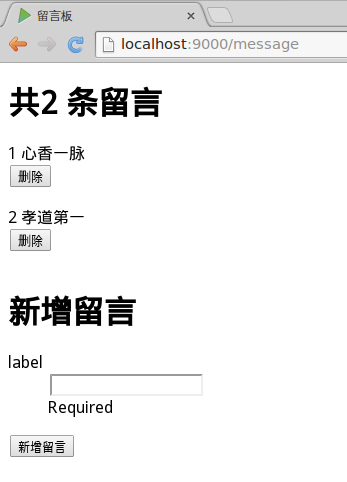
这时需要我们更新一下,在Play控制台里输入如下代码
其中root root分别为当前系统MySQL的用户名和密码。
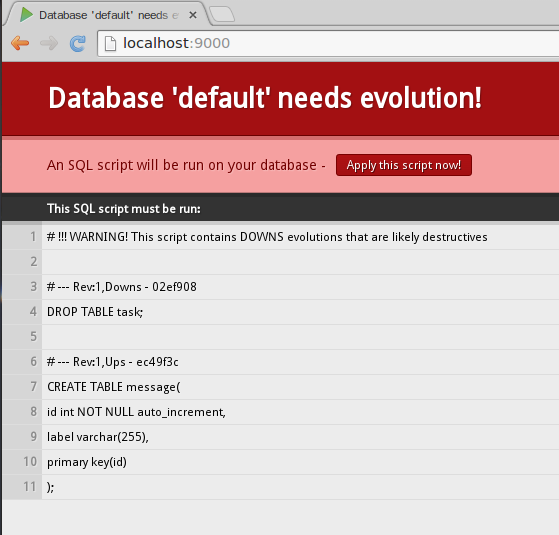
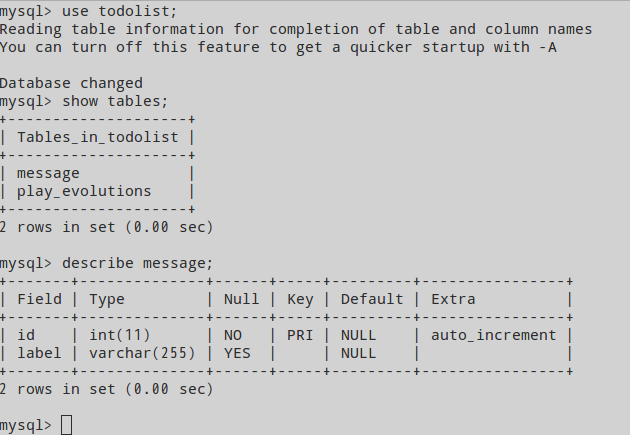
在浏览器器里访问http://localhost:9000,界面如下
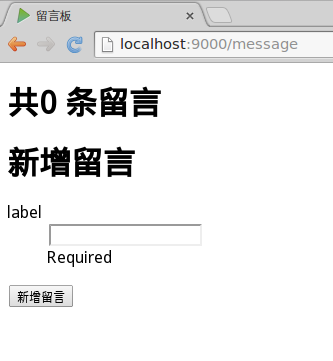
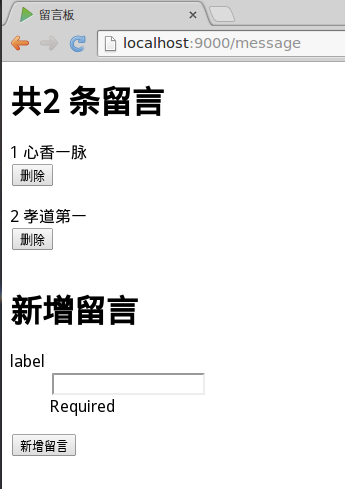
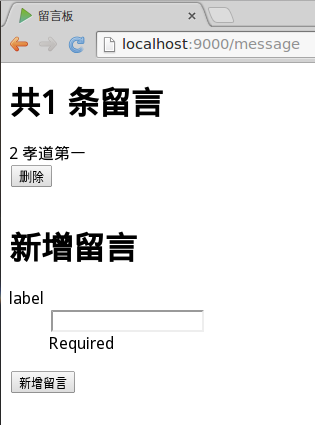
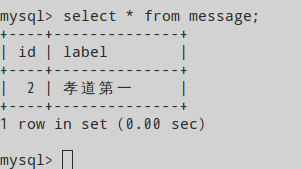
上一节我们制作了一个简单的留言板程序,数据是存在内存里的,重启play服务后留言信息会丢失。现在我们来把留言信息存储在MySQL数据库里。
单击右边链接复习上一节: Play framework 2.0入门教程(三)
我们在上一节留言板的基础上进行修改,如果没有源代码,先下载源码
运行上一节的源码
解压下载的源码,在终端进入到源码路径,输入如下命令运行:
cd todolist play run
在浏览器器里访问http://localhost:9000,效果如下

得到上图的效果后记得把Play服务停掉,ctrl+D,返回play控制台。
定义MySQL驱动程序
编辑conf/application.conf文件,找到下面两行,去掉前面的#,也就是取消注释
# db.default.driver=org.h2.Driver # db.default.url="jdbc:h2:mem:play"上面的驱动程序定义是h2数据库的,我们做一些改动,让他变成MySQL数据库的
db.default.driver=com.mysql.jdbc.Driver db.default.url="mysql://root:root@localhost/todolist"其中root:root分别为MySQL数据库的用户名和密码,todolist是数据库名
由于Play里面只包含了h2数据库的驱动,所以我们需要自己定义MySQL的JDBC驱动依赖
编辑project/Build.scala文件,添加如下依赖
val appDependencies = Seq(
// Add your project dependencies here,
"mysql" % "mysql-connector-java" % "5.1.18"
)这时需要我们更新一下,在Play控制台里输入如下代码
reload update
定义数据库架构
在conf文件夹下定义添加如下结构的文件夹conf/evolutions/default/在default文件夹里新建文件1.sql,内容如下
# todolist schema
# ---!Ups
CREATE TABLE message(
id int NOT NULL auto_increment,
label varchar(255),
primary key(id)
);
# ---!Downs
DROP TABLE message;
新建数据库
在终端下登录Mysql数据库
mysql -u root -proot
其中root root分别为当前系统MySQL的用户名和密码。
输入创建数据库语句
create database todolist CHARACTER SET 'utf8' COLLATE 'utf8_general_ci';
生成数据库表结构
在Play控制台输入run运行工程,在浏览器器里访问http://localhost:9000,出现如下界面

这时单击Apply this scipt now!按钮 ,会自动生成数据库表结构,我们可以在MySQL里面查看一下。
在MySQL控制台输入如下指令:
use todolist; show tables; decribe message;会发现play已经自动为我们按要求创建好表,如下图所示:

处理增删改查
编辑app/models/Message.scala文件,具体如下
import play.api.data._
import play.api.data.Forms._
import play.api.db._
import play.api.Play.current
import anorm._
import anorm.SqlParser._
case class Message(id:Long,label:String)
object Message{
val message={
get[Long]("id")~
get[String]("label") map{
case id~label=>Message(id,label)
}
}
def all():List[Message]=DB.withConnection{implicit c=>
SQL("select * from task").as(message*)
}
def create(label:String){
DB.withConnection{implicit c=>
SQL("insert into task(label) values ({label})").on(
'label->label
).executeUpdate()
}
}
def delete(id:Long){
DB.withConnection{implicit c=>
SQL("delete from task where id={id}").on (
'id->id
).executeUpdate()
}
}
val messageForm=Form(
"label"->nonEmptyText
)
}在浏览器器里访问http://localhost:9000,界面如下

新增留言后,效果如下

删除留言后效果如下

数据库内容如下:

源码下载地址:http://download.csdn.net/download/wfdztl521/5229169
免责声明: 本文仅代表作者个人观点,与爱易网无关。其原创性以及文中陈述文字和内容未经本站证实,对本文以及其中全部或者部分内容、文字的真实性、完整性、及时性本站不作任何保证或承诺,请读者仅作参考,并请自行核实相关内容。
